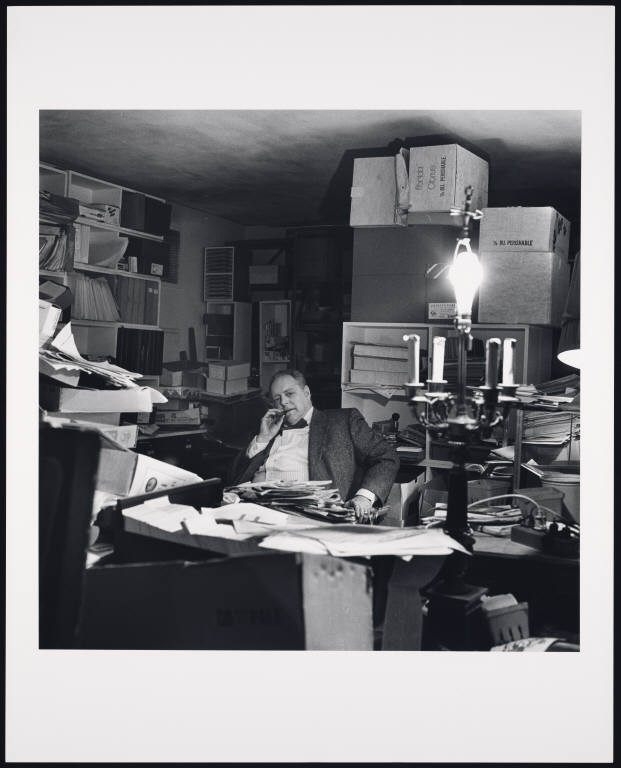

Queer Places:
Columbia University (Ivy League), 116th St and Broadway, New York, NY 10027
Riverside Cemetery Gouverneur, St. Lawrence County, New York, USA, Plot Section K
 Foster
Gunnison, Jr. (1925-1994) was born in Bronxville, New York. In 1944 he entered
Haverford College and soon after transferred to Columbia University,
graduating in 1949.
Foster
Gunnison, Jr. (1925-1994) was born in Bronxville, New York. In 1944 he entered
Haverford College and soon after transferred to Columbia University,
graduating in 1949.
Gunnison moved to Hartford, Connecticut, in 1955 to pursue a Masters degree in psychology at Trinity College. After completing a second Masters degree at Trinity, in philosophy, he visited the New York City offices of the Mattachine Society. The year was 1964 and as Gunnison explained to receptionist Craig Rodwell, who would later emerge as a radical figure in the Society and an organizing force throughout the city, he had "known for some time that he was not developing into a heterosexual." Gunnison, who was in his early 40s, was looking for opportunities to volunteer.
Gunnison's decision to join the Mattachine Society, the nation's oldest homophile organization, established in San Francisco in the early 1950s, took place in the context of a growing public dialog about and resistance to the theories of Drs. Bieber and Socarides that characterized homosexuality as a pathological disorder. Within the rapidly growing and increasingly active homophile movement, organizations such as Mattachine, ONE and Daughters of Bilitis were joined by new groups such as the Society for Individual Rights and the Council on Religion and the Homosexual. Groups shifted attention from the dialog about the origins of homosexuality to efforts aimed at opposing discriminatory practices and promoting social reforms. In the late 1960s, few years before the Stonewall riots of 1969, student leaders and campus groups emerged as facilitating forces for change, bolstering the organizations' membership and in many cases their radicalism. Yet amid calls for centralization and unity within the movement, the new ranks challenged the "old guard" -- their leadership, agendas, and decisions on behalf of these organizations -- and facilitated the development of splinter groups and localized movements.

Photo by
Robert Giard, Rights Notice: Copyright Jonathan G. Silin (jsilin@optonline.net)
In the mid 1960s, Gunnison involved himself in the Eastern Conference of Homophile Organizations ( ECHO), an early coalition of organizations seeking the creation of a national homophile organization, offering his services as secretary. In 1966, he was appointed Chair of the Credentials Committee for the North American Conference of Homophile Organizations. From 1965 to 1969, Gunnison collected the office and conference records of ECHO and NACHO, soon after expanding the scope of his collecting activities to include the records and periodicals of several gay, and some lesbian, organizations throughout the United States. During this period Gunnison founded his own organization, the Institute for Social Ethics ( ISE), which he described as a "libertarian-oriented research facility and think tank for controversial social issues." Under the guise of ISE, Gunnison authored the pamphlet An Introduction to the Homophile Movement (1967).
In the early 1970s, Gunnison's interests and the direction of the ISE shifted. An avid cigar smoker, Gunnison turned his attention to smoker's rights and support for pro-smoking organizations. In 1984 he founded the American Puffer Alliance which he described as the first independent smokers liberation organization in the United States. The aim of the organization was to advocate for individual rights and the right of personal comfort. In 1985 APA began its annual Smoke-In Day, a counterdemonstration to the American Cancer Society's Smoke-Out Day. From 1992 to 1993, Gunnison authored a series of articles for American Smokers Journal entitled "A Smokers Manifesto."
Gunnison continued his association with the Society for the Preservation and Encouragement of Barber Shop Quartet Singing in America and smokers rights organizations through the 1970s and until his death in 1994.
My published books: